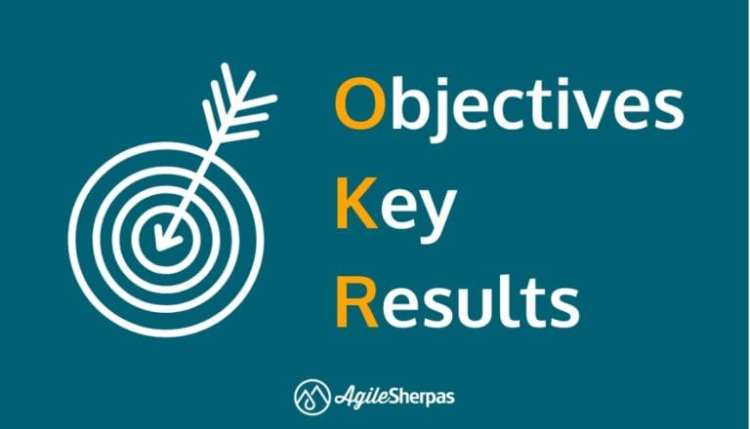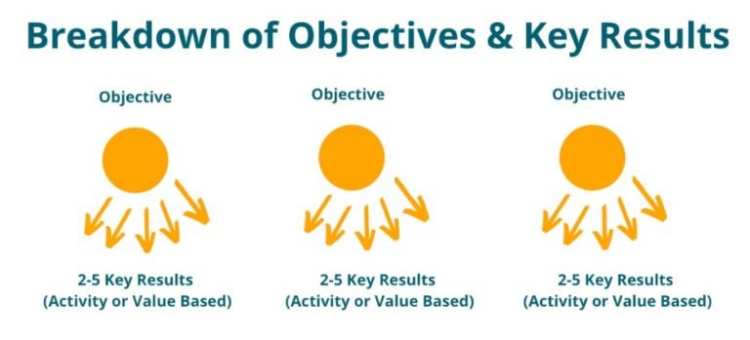This post was originally written by Raviv Turner of our Agile Training partner, AgileSherpas, who excel in preparing marketing teams to go agile through training, coaching, and consulting services. It is reposted here with permission.
The Agile mindset and corresponding practices are making their way steadily into marketing tactics, but when it comes to strategy, goal setting, and planning, our old command-and-control tendencies can return.
Most marketing organizations are still using an annual, waterfall, top-down process to create a set of static goals for an entire year. While comfortable, this process conflicts directly with Agile ways of working.
Instead, we need to define our Agile marketing goals using OKRs (Objectives and Key Results), the goal setting framework adopted by Google, Twitter, LinkedIn, and more. Here’s what that looks like, and how to get started.
What Are OKRs?
First and foremost, we need a working definition of OKRs: OKR is an acronym for Objectives and Key Results.

Its origins can be traced back to Peter Drucker in 1954 when he invented MBO (Management by Objectives). MBO was largely used by Intel at the time, and later became widespread. John Doerr, an ex-Intel employee and early advisor to the Google founders Larry Page and Sergey Brin, is credited with evolving the MBO approach into the current OKR format.
As the name suggests, an OKR is made up of two components:
Objective: The goal you wish to achieve. Your objective should be aspirational, memorable, and qualitative.
The Key Results: Results we want to achieve on the way to successfully achieving the objective. A general rule of thumb is to have no more than 2-5 key results per objective.

Key results should be
- Measurable and quantifiable
- Focus on making the objective achievable
- Difficult to achieve, but not impossible
OKRs in the Marketing Context
Let’s look at a few OKR examples specific to marketing to see how Agile marketing teams can align their marketing work with the business:
Marketing Objective #1
Double the number of monthly blog subscribers.
Marketing Key Results
-
- Expand distribution methods of the blog to RSS news aggregators like Apple News, Google News, and Flipboard.
- Implement subscriber call-to-action (CTA) on the landing page for new, un-cookied unique visitors.
- Launch two campaigns with discounts offered for new blog subscriptions.
Marketing Objective #2
Get half of all existing content on the first page of Google SERP (Search Engine Results Page).
Marketing Key Results
-
- Write at least three pieces of new content each week based on SEO action plan
- Use online visibility and marketing analytics software to check old content to see how it can be optimized
- All images in the content have optimized alt text and titles
OKRs Align with Agile Marketing Execution
The above examples include activities, but they aren’t just about movement. It’s easy to stay busy forty hours a week, but movement doesn’t always deliver outcomes. OKRs can help transform your marketing activities into business value by:
- Creating a results-focused culture. Instead of measuring pure activity, we begin all our analyses with the results those activities produced. Doing more doesn’t help if there’s no significant impact.
- Enabling autonomous, self-organizing teams.OKR-driven teams don’t just deliver the campaigns their stakeholders ordered’they attack agreed-upon objectives using their collective expertise.
- Adopting value-based ceremonies.There’s not a single ceremony in Agile marketing devoted tracking results, but by adopting OKRs, Agile marketing teams can change this scenario and start to regularly check progress against their goals. OKRs also help prioritize the marketing backlog. If a user story won’t help achieve the OKRs, it is not a priority.
- Enabling Agile marketing transformation.One of the main barriers to Agile marketing is the perceived loss of predictability. OKRs help overcome that by replacing the date-driven Gantt chart with a commitment to deliver business results within a set time period like a quarter. Instead of committing to deliver X by Y date, the team commits to iterate towards the agreed on OKRs until they’re achieved or the timebox expires.
- Incentivizing leaner approaches and smaller batches.By adopting a value-based timebox, Agile marketing teams commit to deliver value (improve the OKRs) until the end of the OKR iteration. This makes them adopt leaner approaches in order to measure their work’s impact on the OKRs and adjust accordingly.
How to Use OKRs in Agile Marketing
In a bottom-up, Agile mindset, make sure that tactical OKRs are set by individual marketing teams align with the strategic OKRs that marketing leadership sets.
There are lot of ways to document OKRs, but we like using Doerr’s goal formula. The example below is tailored for marketing: We will [Marketing Activity] to deliver [Business Outcome] as measured by [set of Key Results].
Here’s an example:
We will launch the new campaign to increase customer satisfaction as measured by NPS metric and/or churn rate metric.
Remember, Agile marketing OKRs are designed to describe an outcome’the impact you wish to achieve?but don’t dictate how the outcome could be achieved.
A common mistake is describing an output rather than an outcome as your OKR. Something like ‘Launch campaign X? is not an OKR; it’s not the objective, it’s an output. ‘Launching campaign X to generate $$$ pipeline,? is the outcome.
OKRs Complement Agile & Lean
By encouraging the move away from working on marketing activities and toward aligning with business goals, OKRs help you to create a culture focused on measuring and delivering value. OKRs can also have a positive influence on marketing strategy by encouraging reflection and learning.
Last but not least, OKRs can help you prioritize the marketing backlog. If a marketing activity doesn’t speak directly to one of the OKRs, push it to the bottom of the backlog or remove it altogether. Instead of committing to deliver X by Y date, the marketing team commits to iterate towards the agreed business outcome.
Now that we?ve covered how to establish OKRs in the Agile marketing context, you need to track your progress towards their successful completion. In my next post we’ll tackle how to prioritize your marketing backlog using OKRs, and the best way to run an OKR standup meeting.
For more information on Agile, including how marketers are starting their journey, check out the 2020 State of Agile report.
If you would like to learn more about OKRs, below is some recommended reading:


